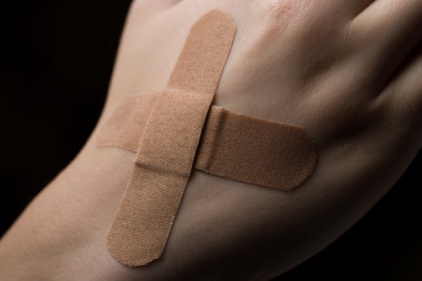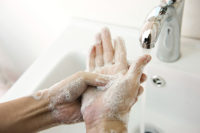 The hand is the part of the body most often injured and these injuries are sometimes difficult to heal. Hand injuries are preventable. By identifying hazards and developing safety measures, you and your employer can prevent your hands from being among the 500,000 injured in Canada every year.
The hand is the part of the body most often injured and these injuries are sometimes difficult to heal. Hand injuries are preventable. By identifying hazards and developing safety measures, you and your employer can prevent your hands from being among the 500,000 injured in Canada every year.
Think of your hands as...Valuable
Your hands are superbly designed tools of amazing strength and dexterity. They can pinch, grasp, twist, lift, hold and manipulate while doing a wide variety of other specific tasks.
Vulnerable
Your hands and wrists are a complex system of bones, muscles and tendons, ligaments, blood vessels and nerves protected by layers of skin. A total of 27 hand and wrist bones are connected to the muscles by tendons. Ligaments join bones together and hold the joints in place. Blood vessels supply nourishment to all these parts. Nerves convey sensations and help to control hand and finger movements.
The skin provides a barrier against chemicals, heat and cold. Skin on the back of the hand is thin and elastic and, on the palm, it is thick to provide traction, cushioning and insulation.
Remember! Your hands are valuable but also vulnerable! If even a small cut makes it difficult and painful to work or play, imagine if you had a serious injury.
Workplace hazards and injury prevention
A hazard is any energy that can cause harm. Injuries can be immediate or may happen over time. In the workplace, your hands are subjected to many hazards.
Mechanical hazards
There are numerous mechanical hazards from tools, equipment, machines, structures and vehicles:
- chains, gears, rollers, wheels and transmission belts;
- spiked or jagged tools;
- edges that catch and tear;
- cutting, chopping and grinding mechanisms;
- cutting tools such as knives and presses;
- falling objects, etc.
A few prevention tips
- Work at your own pace. The frequency of hand injuries is proportional to how quickly you work.
- Stay alert! Always watch what your hands are doing.
- Use a push stick to feed a circular saw or other power tools such as jointers and shapers.
- Know how to handle the tools and equipment you work with. Don't take shortcuts.
- Wrenches should properly fit nuts and bolts.
- Use long magnetic poles for retrieving items from places where it is dangerous for hands to go.
- Presses and other machines should be designed to keep hands away from the work area.
- Control panels should be designed, installed and guarded to reduce the risk of accidents as much as possible.
- Use different colors, shapes or sizes to distinguish safety shut-off controls from all other controls.
- Never start repair work on power tools or machinery without first checking that the power is shut off and the machine is locked out.
- If you are taking any drugs or medication, consult your doctor. Some drugs and medication impair your faculties, prevent you from thinking clearly and slow your reflexes.
Note:It is dangerous to wear rings at work. Even a ring that fits your finger perfectly poses a hazard. If the ring is forced off or breaks, it may pull the flesh from the finger or amputate it. Remember, too, that long hair, loose clothing, dangling accessories, jewellery and similar items can get caught in machinery. If these are worn, they must be tied, covered or otherwise secured to prevent them from becoming a safety hazard.
Heat and cold
Burns to the hands can be caused by exhaust pipes, sparks, steam, hot pipes, hot liquids, welding and molten metals. Even extreme cold can cause burns. Your hands and fingers turn numb at minus 15oC, which can increase the risk of accidents.
A few prevention tips
- Use gloves appropriate for the job and temperature.
- Insulate tool handles.
- Let hot surfaces cool before working on them.
- Before hands become too cold, take time to warm them up.








